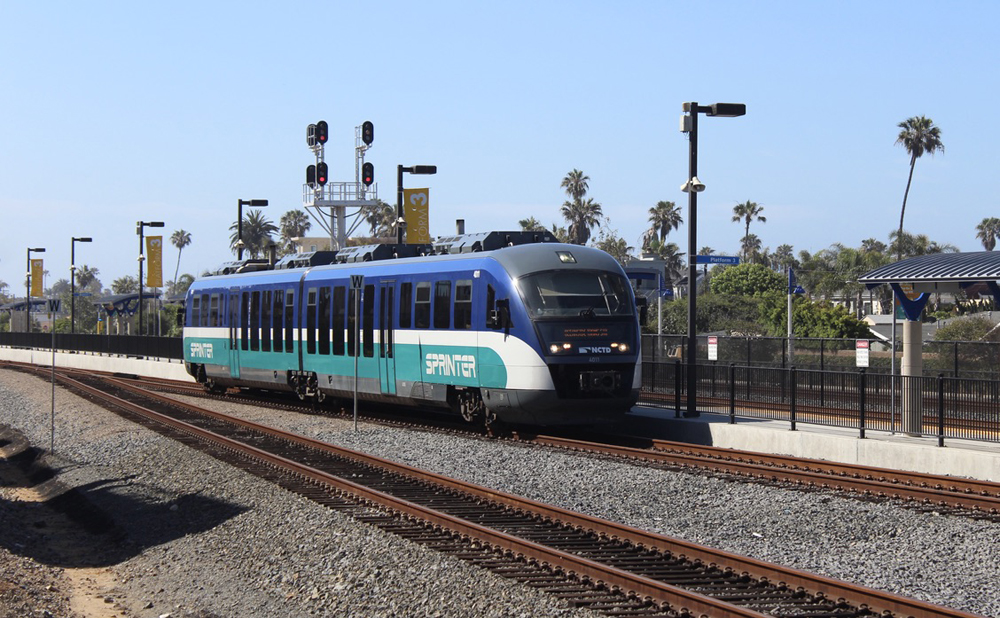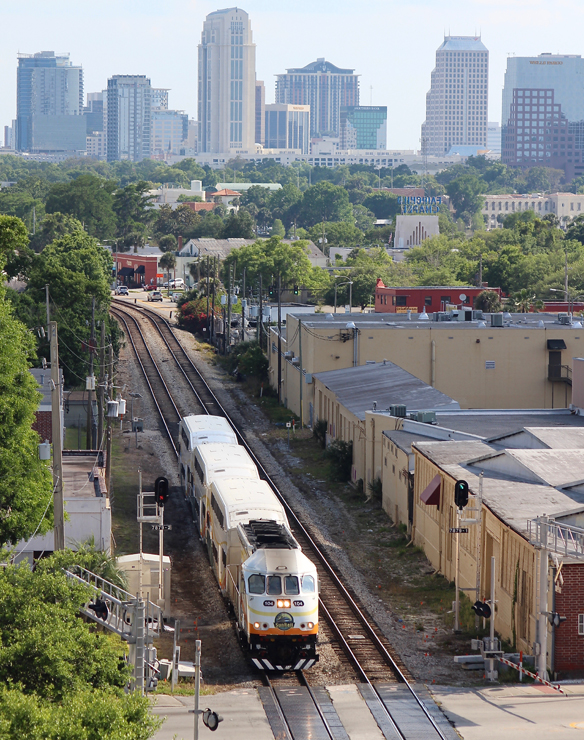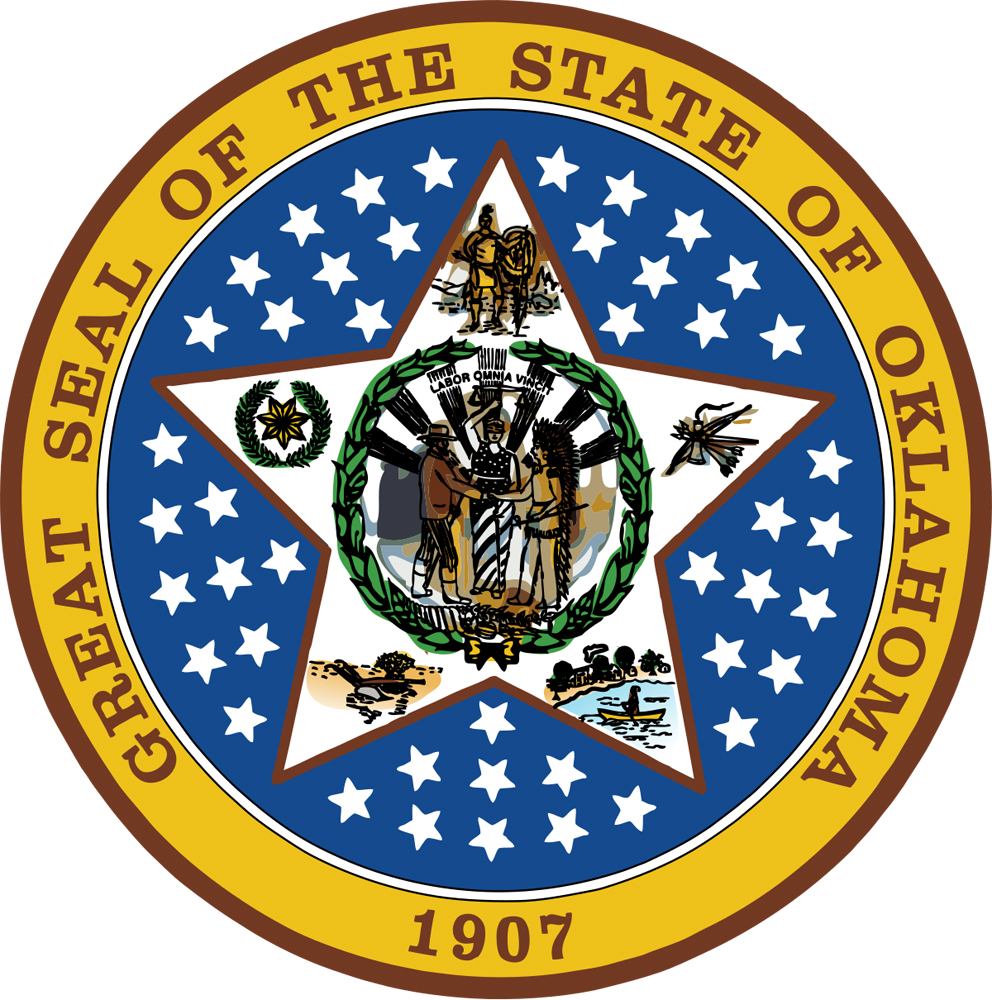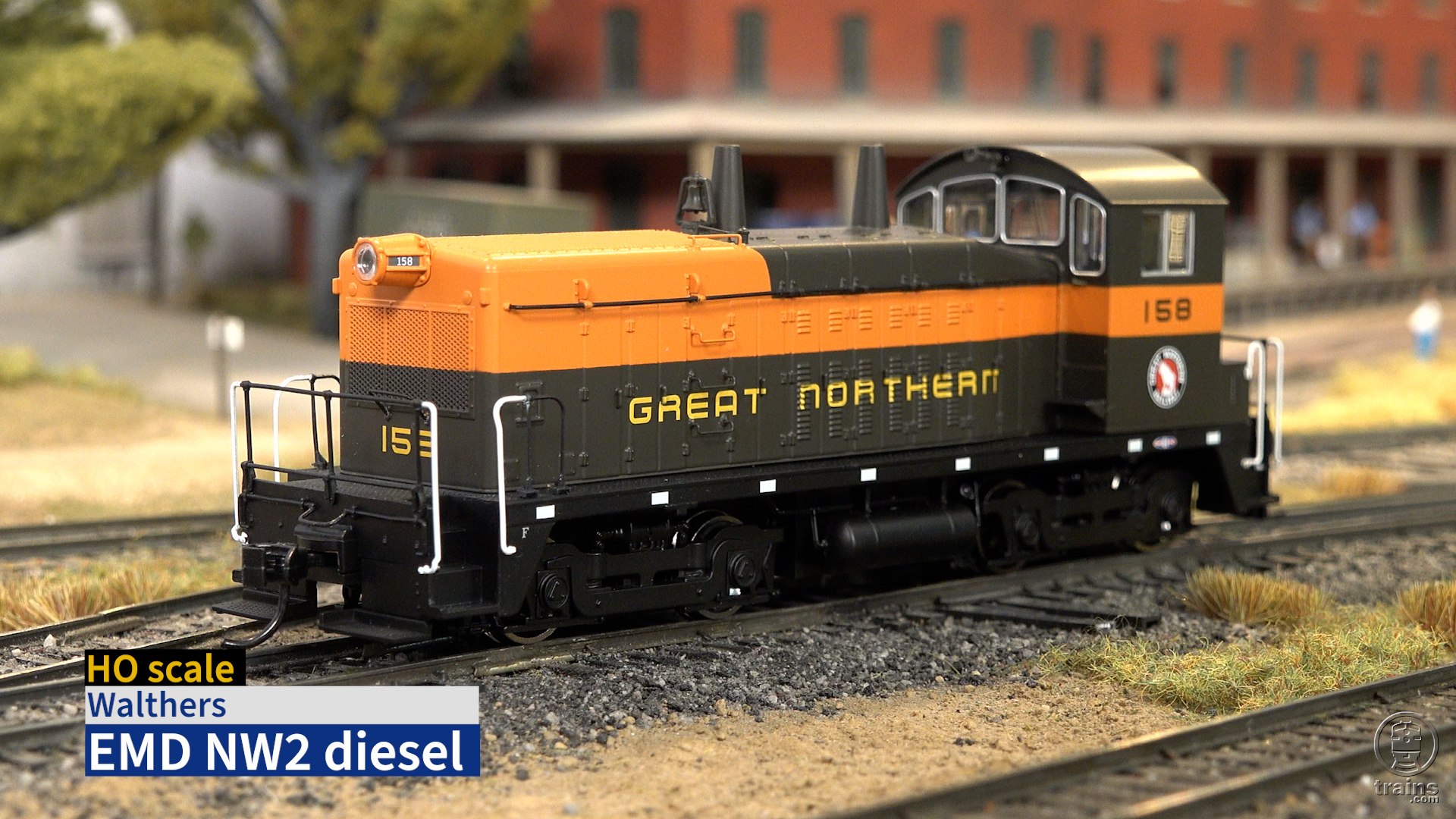
WASHINGTON — Rail projects received a miniscule amount of the $1.8 billion in 2024 Rebuilding America’s Infrastructure with Sustainability and Equity (RAISE) grants announced Wednesday by the U.S. Department of Transportation. Although 148 projects were awarded funding for construction or planning, most of the money was directed to street realignment to enhance safety for motorists, bicyclists, and pedestrians; path and trail construction; and highway overpasses.
Planning funds for passenger, transit
The only passenger rail or transit-associated grants are for planning, not construction. They include:
— Sprinter (California): $10.2 million to study completing 3.6 miles of double track east of the Palomar College station on a 7-mile section to the end of the line at Escondido, Calif. The North County Transit District route operated with Siemens DMU’s connects with NCTD’s Coaster and Amtrak at Oceanside, Calif., north of San Diego.
— Valley Metro (Arizona): $15.9 million to study building a branch from Mesa to Tempe.
— America’s Central Port (Illinois): $550,000 to study building a “Y interchange” rail connector to the Granite City and Madison Harbor ports on the Mississippi River. This would allow unit trains from all six class I railroads in the St. Louis metropolitan area to serve the ports.
— Aberdeen MARC-Amtrak station (Maryland): $800,000 to study “right-of-way needs” if the facility were to be expanded.
— South Salem Commuter Rail Stop (Massachusetts): $2.78 million to complete planning and engineering for a second MBTA station in the city, including design of a new pedestrian overpass.
— Interborough Express light rail (New York): $15 million to the study the feasibility of building light rail between the boroughs of Brooklyn and Queens in New York City.
Grade crossing projects in five states funded
One construction project with a freight rail component is at Menominee on Michigan’s upper peninsula. A Lake Michigan port enhancement project will receive $21.3 million that includes restoration of rail spurs. Construction is set to begin in January 2026.
Grade separation awards benefitting rail include:
— Round Lake, Ill. ($18.8 million; construction to start February 2026): Improvements around the Metra station.
— Santa Ana, Calif. ($25 million; January 2027): An overpass eliminating a highway crossing near the Metrolink-Amtrak station.
— Dubuque, Iowa ($25 million; April 2027): Grade separation over CPKC tracks downtown.
— Belgrade, Mont. ($25 million; July 2026): An overpass at BNSF’s former Northern Pacific main line.
— West Fargo, N.D. ($23.8 million; July 2025): Grade separation over BNSF tracks.
Before construction can begin, competitive bidding must take place. These expensive safety-oriented projects are funded utilizing RAISE grants, even though every state receives annual formula grants from the Highway Trust Fund based on vehicle miles traveled and other factors. However, grade separations involving multiple modes, as well as installation of highway crossing warning devices, aren’t paid for by that funding source.
The full list of RAISE grants is available on the U.S. DOT’s website.
— Updated June 27 at 8:30 a.m. CT to correct type of equipment used by Sprinter trains; updated at 9:30 p.m. to add South Salem project.














Maybe I’m misunderstanding how Trains is characterizing these grants, but it seems like you’re overlooking the planning grant in San Diego for the Tenth Avenue Marine Terminal, which is very much about BNSF freight handling in that area…
The Sprinter uses the Siemens VT642 Desiro Classic DMU, not Stadler DMU’s
Corrected. Thank you.
$42,000,000.00 for STUDIES?!
It’s called buying votes in an election year.
The Soviet Union had a better government than we do.
Yes Charles, and it was even a two-party system: The Communist Party or the Farewell Party! LOL